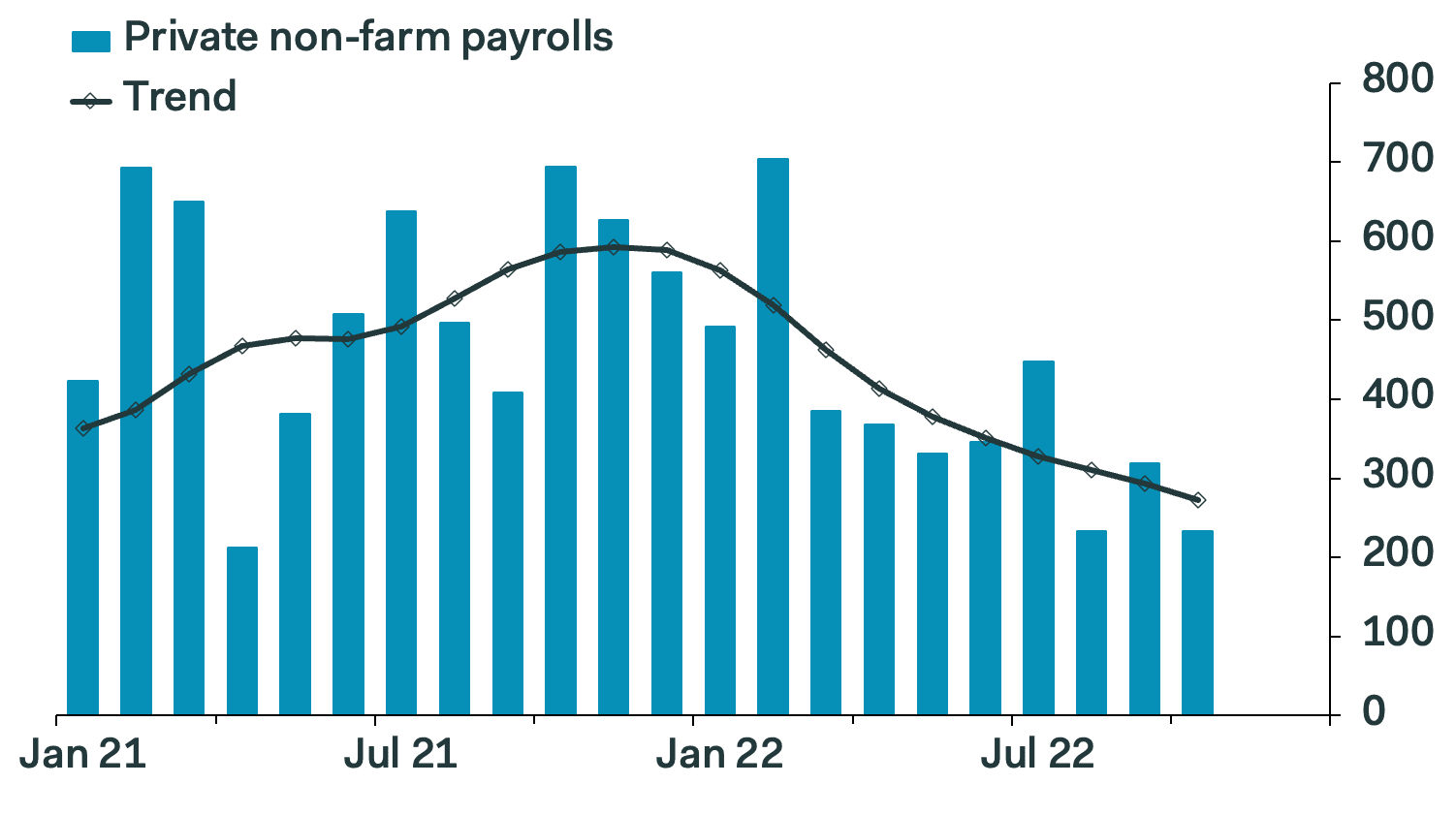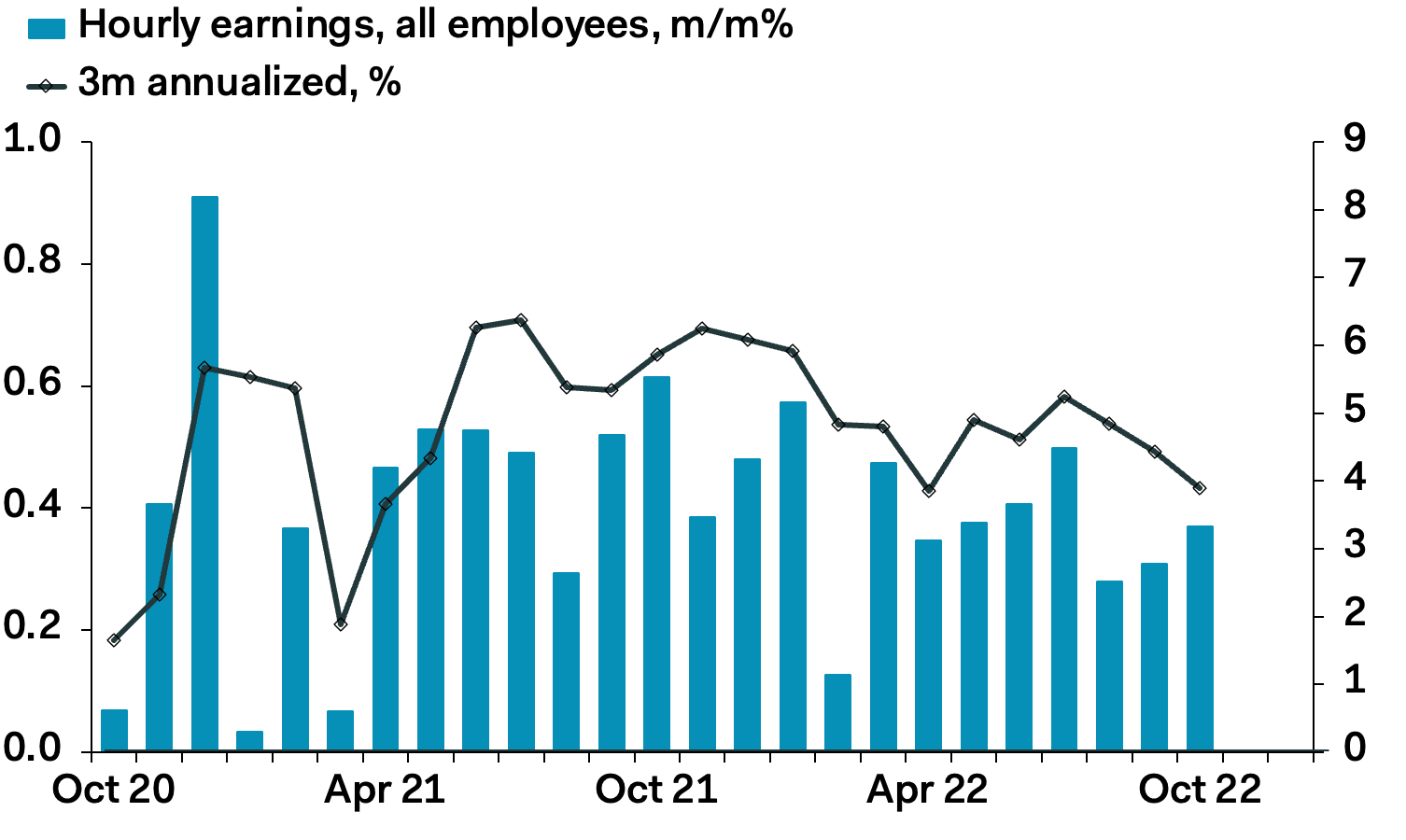Dollar Retreats against Pound and Euro in Wake of U.S. Jobs Report
- Written by: Gary Howes
-

Image: Doug Turetsky. Sourced: Flikr, licensing: CC 2.0.
The Dollar fell a percent against the Pound and 1.20% against the Euro following the release of U.S. labour market data that, while still strong, confirmed a trend of slowing employment gains and wage growth.
The economy added 261K jobs in October, a strong beat on the consensus expectation of 193K, while September's figure was revised higher to an impressive 315K.
Average hourly earnings rose 0.4%, beating expectations for 0.3%, and confirming ongoing wage dynamics that will underpin domestic inflationary pressures going forward.
This data is therefore consistent with the Federal Reserve's message from mid-week that it is too soon to consider ending its rate hiking cycle, a view that boosted Dollar exchange rates across the board.
"The Fed will almost surely judge that job gains are too strong, and wage growth too high. It supports Fed Chair Jerome Powell’s assessment this week that the terminal interest rate is likely to be higher than the Fed previously anticipated," says Daniel Vernazza, Chief International Economist at UniCredit Bank.
The Dollar's weakness could therefore represent profit-taking following Wednesday's gains as there is nothing in this data that would suggest the themes of recent months are about to flip in dramatic fashion.
Dollar sellers could however take heart that the November release confirms a trend of declining employment growth that will inevitably extend as the economy slows in response to the Fed's rate hikes.
"We think that both this quasi-structural source of labor demand and the cyclical component are now slowing, and we expect job growth to dip below 200K per month over the next few months," says Ian Shepherdson, Chief Economist at Pantheon Macroeconomics.
Image courtesy of Pantheon Macroeconomics.
He adds that the 0.4% increase in average hourly earnings is nothing like big enough to offset the unexpected softness in August and September.
"The three-month average increase, 0.32%, annualizes to 3.9%, the slowest increase since the chaos of 2020 and well below the y/y rate, 4.7%," says Shepherdson.
Softness in wage dynamics would be welcomed by the Fed as it looks for signs the hikes it has already delivered are having an impact.
"Most survey-based indicators suggest that pressure on wage gains is easing, so the hard data should follow suit," says Shepherdson.
Image courtesy of Pantheon Macroeconomics.
The Fed hiked interest rates a further 75 basis points and while it indicated an end to such outsized hikes it also made clear more rises were needed in 2023, disappointing some market participants that expected clearer signs it was readying to end the hiking cycle.
Despite Friday's advance the Pound to Dollar exchange rate is lower by 3.0% for the week at 1.1258, taking bank transfer rates to approximately 1.1030 and those on offer at competitive independent payment providers to approximately 1.1222.
The Euro to Dollar exchange rate is lower on the week by a percent at 0.9861, taking bank payment rates to around 0.9591 and independent payment provider rates to around 0.9837.
The Dollar weakness seen in the wake of Friday's payrolls release is unlikely to represent a turn in trend, something that would only likely come about following a succession of decidedly weak employment data and surprisingly soft inflation data.
"With two more CPI reports and the November employment report to come before the Fed’s next meeting on 13-14 December, the possibility of another 75bp hike remains on the table," says Vernazza.
"It will take more convincing signs that broader inflation pressures are easing to convince Federal Reserve officials to slow the pace of interest rate increases," says Claire Fan, Economist at RBC Economics.
"Despite a slower pace of job growth there remains a lot of momentum in labour markets," she adds.
RBC expects employment growth will continue to slow but remain positive, and the unemployment rate will edge slightly higher over the remainder of this year.
"Our base-case forecast assumes another 50 bp increase in December, but with risks tilting to a larger increase than that," says Fan.
If this assumption holds, this will remain a Dollar-supportive environment into year-end.
"On balance, today’s jobs data fits with the view of the Fed ultimately raising rates above 5% and holding them there for some time, a dollar-positive theme," says Joe Manimbo, Senior Market Analyst at Convera.













